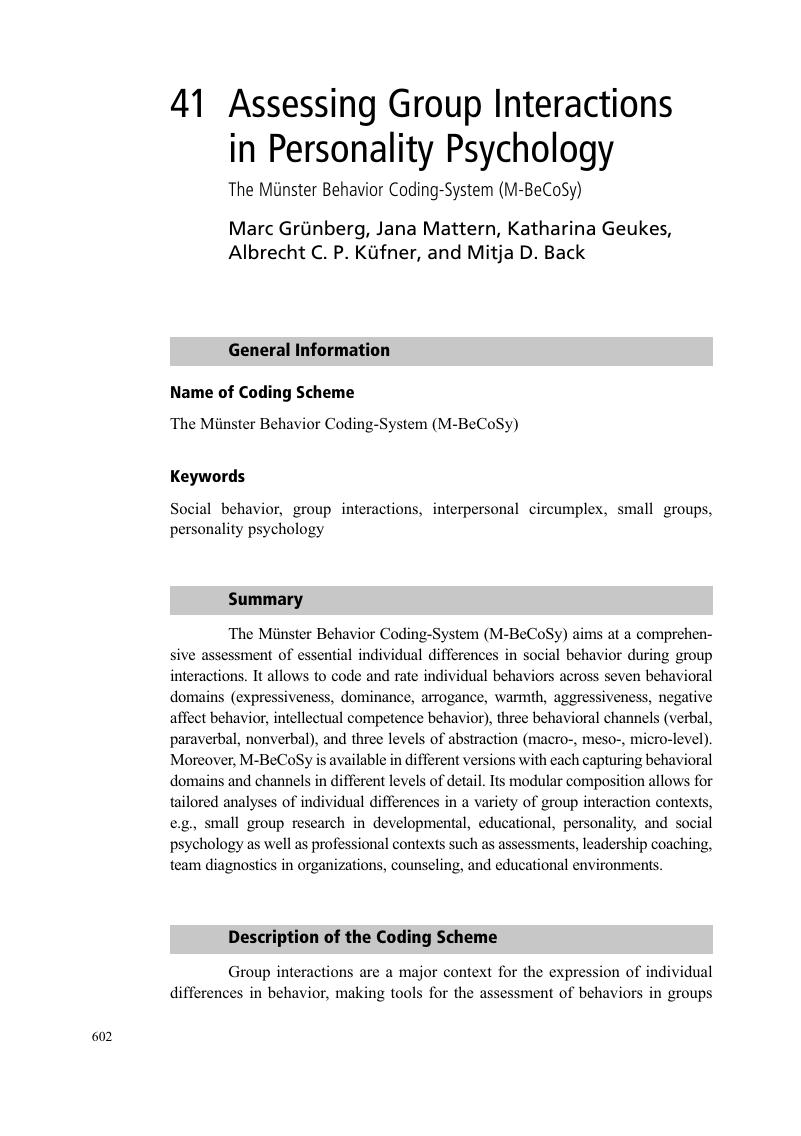Book contents
- The Cambridge Handbook of Group Interaction Analysis
- The Cambridge Handbook of Group Interaction Analysis
- Copyright page
- Dedication
- Contents
- Figures
- Tables
- Contributors
- Editors’ Preface
- Organization of This Handbook
- How to Work with This Handbook
- Part I Background and Theory
- Part II Application Areas of Interaction Analysis
- Part III Methodology and Procedures of Interaction Analysis
- Part IV Data Analysis and Data Presentation
- Part V Coding Schemes for Interaction Research
- General Group Process Systems
- Argument, Conflict, and Negotiations
- Coordination and Coherence
- Cognition and Metacognition
- Personality and Team Behavior
- 39 The Behavior Analysis Coding System
- 40 Groupness/Entitativity Observational Coding (GEOC)
- 41 Assessing Group Interactions in Personality Psychology
- Roles and Relationships
- Appendix
- Index
- References
41 - Assessing Group Interactions in Personality Psychology
The Münster Behavior Coding-System (M-BeCoSy)
from Personality and Team Behavior
Published online by Cambridge University Press: 19 July 2018
- The Cambridge Handbook of Group Interaction Analysis
- The Cambridge Handbook of Group Interaction Analysis
- Copyright page
- Dedication
- Contents
- Figures
- Tables
- Contributors
- Editors’ Preface
- Organization of This Handbook
- How to Work with This Handbook
- Part I Background and Theory
- Part II Application Areas of Interaction Analysis
- Part III Methodology and Procedures of Interaction Analysis
- Part IV Data Analysis and Data Presentation
- Part V Coding Schemes for Interaction Research
- General Group Process Systems
- Argument, Conflict, and Negotiations
- Coordination and Coherence
- Cognition and Metacognition
- Personality and Team Behavior
- 39 The Behavior Analysis Coding System
- 40 Groupness/Entitativity Observational Coding (GEOC)
- 41 Assessing Group Interactions in Personality Psychology
- Roles and Relationships
- Appendix
- Index
- References
Summary

- Type
- Chapter
- Information
- The Cambridge Handbook of Group Interaction Analysis , pp. 602 - 611Publisher: Cambridge University PressPrint publication year: 2018
References
Primary Sources
Secondary Sources
- 5
- Cited by

